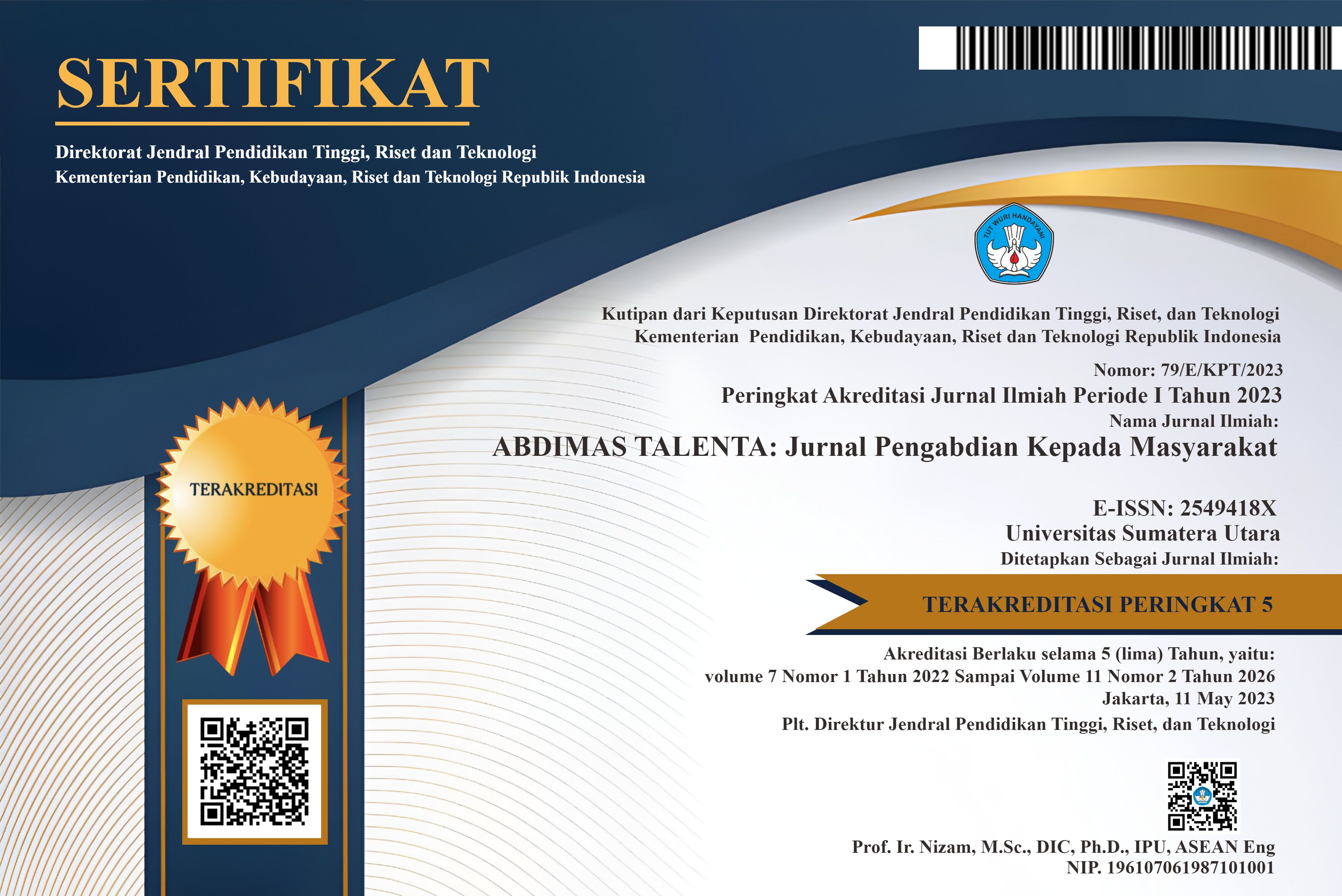The Impact of River Water Quality on Women's Health in Blankahan Village: Physico-Chemical Analysis and Social Health Analysis
DOI:
https://doi.org/10.32734/abdimastalenta.v10i1.19867Keywords:
Health, Physico-Chemical, Quality River Water, Statistical TestAbstract
River water plays an important role in human life. Along with the increasing population and waste problems generated from human activities, climate change is a factor that also affects river water quality. Blankahan Village is located in Langakat District, with 3 interconnected rivers, Palma River, Pekan Kuala, and Dosi Valley. This program examines the impact of river water quality on public health in Blankahan Village, with a focus on physico-chemical and social health analysis to support the achievement of SDGs points 3 and 6. It was found to be in a fairly poor and murky condition according to the classification according to Government Regulation Number 22 of 2021. Furthermore, based on statistical tests and One Way ANOVA Tests indicated that there was no statistically significant difference in the mean perception among the age groups. Some indicated women's health problems due to river water use such as dermatitis, skin diseases, and diarrhea continue to increase. River water sources are still used by some communities to fulfill household needs during the dry season despite many negative perceptions that river water quality is poor, dirty and polluted with waste. River water quality is influenced by seasonal factors and pollution, namely the difference in river water quality during the rainy and dry seasons, and is also caused by domestic waste, livestock waste, and industrial waste entering the water.
Downloads
Downloads
Published
Issue
Section
License
Copyright (c) 2025 ABDIMAS TALENTA: Jurnal Pengabdian Kepada Masyarakat

This work is licensed under a Creative Commons Attribution-ShareAlike 4.0 International License.
The Authors submitting a manuscript do so on the understanding that if accepted for publication, copyright of the article shall be assigned to Jurnal Abdimas TALENTA as well as TALENTA Publisher Universitas Sumatera Utara as the publisher of the journal.
Copyright encompasses exclusive rights to reproduce and deliver the article in all forms and media. The reproduction of any part of this journal, its storage in databases and its transmission by any form or media, will be allowed only with written permission from Jurnal Abdimas TALENTA.
The Copyright Transfer Form can be downloaded here.
The copyright form should be signed originally and sent to the Editorial Office in the form of original mail or scanned document.












